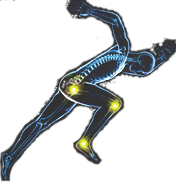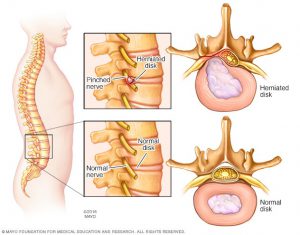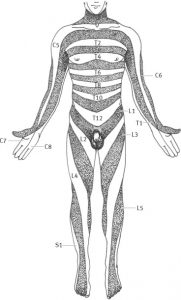Using either heat or cold on an injury is a question we get daily. First of all, to appreciate the problem lets try and understand the process we are trying to manage.
Inflammation.
The process we are trying to manipulate and control is inflammation. The inflammatory mechanism is a natural process that is a defence response to tissue damage.
Inflammation is necessary to allow tissue repair but to also dispose of microbes, toxins and foreign material at the site of injury.
When inflammation occurs, you will usually find redness, pain, heat and swelling. However, a loss of function usually occurs when the process is in full swing.
Acute.
The moment you hurt yourself, the inflammatory process begins and you will notice the symptoms described above. The acute phase is usually for 24 hours before entering the sub acute stage for a further 24-36 hours.
At the acute stage people usually use cold to reduce the inflammation. Conversely research suggest that it would be a good idea to back off from the ice and anti-inflammatory medication to allow the process to rid the area of toxins and promote tissue repair. However, the ice is usually used to help numb and reduce pain.
Chronic.
When you enter the chronic stage of inflammation, the area is usually cold and you are left with swelling and a loss of function. This is when you need to get the area moving, to disperse swelling and to regain function.
Usually the loss of function produces pain due to muscle guarding. This is where the heat and the movement come in. The Heat will help relax the muscles to enable you to reestablish movement that the area is not accessing and has simply forgotten about.
In essence, when you lose function, other tissues have to work harder to maintain homeostasis. This is what people call compensation.
What should we do?
Simple: try for as long as possible to allow inflammation to happen for as long as you can in the first 12-24 hours, then use ice to reduce inflammation. When the area becomes chronic (3 days approx.) use heat.
The confusing aspect to the debate is when people have long term chronic pain. This is usually when chronic inflammation is present and not helping you. There are non of the positive properties like tissue repair occurring.
Therefore, we can produce more acute inflammation to establish tissue repair. We can do this by using heat in the morning with exercises, which will help get you moving and may produce a minor acute inflammatory response. Then in the evening use ice for no more than 10 minutes before you go to bed. This will help with discomfort and reduce inflammation that has occurred during the day.
We hope this helps . . . .



